Australia fires: New South Wales declares week-long emergency
- Published
Evacuations cause gridlock in Batemans Bay, New South Wales
The leader of Australia's eastern New South Wales state has declared a week-long state of emergency in response to the escalating bushfire threat.
High temperatures and strong winds are forecast for the weekend, leading to "widespread extreme fire danger".
Troops are also preparing to evacuate some of the 4,000 people trapped by fires in neighbouring Victoria state.
Since September, bushfires have killed 18 people and destroyed more than 1,200 homes across NSW and Victoria.
At least 17 people remain missing after fires this week alone.
Thousands of people are already fleeing a vast "tourist leave zone" in NSW, with supplies running low in some cut-off towns. It's been called "the largest relocation out of the region ever".
In Victoria, a naval vessel has arrived off the coastal town of Mallacoota, near the NSW border.
Victoria Premier Daniel Andrews said the ship would take up to 800 people early on Friday. He said it could do "multiple trips".
Defence Minister Linda Reynolds tweeted that the HMAS Choules was in position.
Allow X content?
This article contains content provided by X. We ask for your permission before anything is loaded, as they may be using cookies and other technologies. You may want to read X’s cookie policy, external and privacy policy, external before accepting. To view this content choose ‘accept and continue’.

'What could be a horrible day'
The state of emergency will kick in at 08:00 on Friday (21:00 GMT on Thursday) and last for seven days.
It will allow local authorities to carry out forced evacuations, road closures "and anything else we need to do as a state to keep our residents and to keep property safe", NSW Premier Gladys Berejiklian said on Thursday.
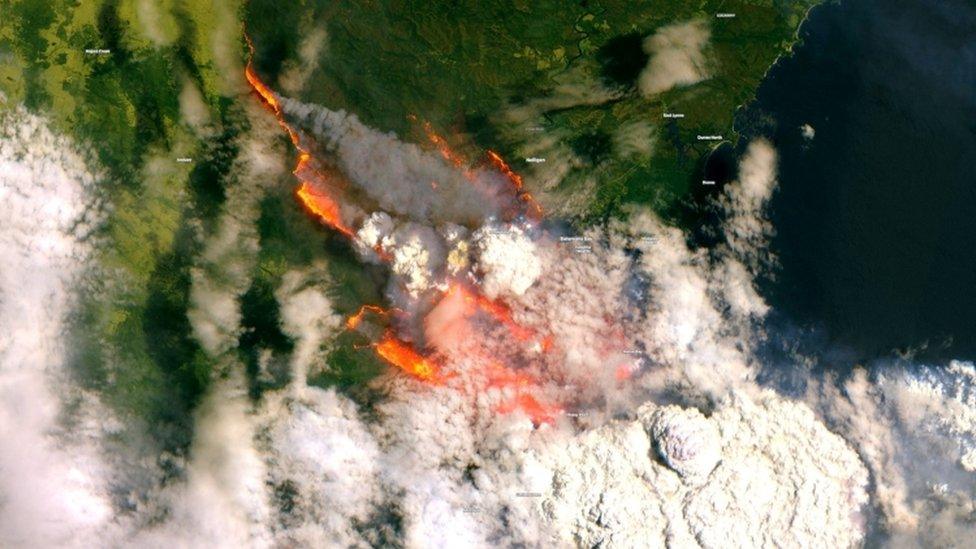
A satellite image shows the extent of smoke and flames at Batemans Bay
"We don't take these decisions lightly but we also want to make sure we're taking every single precaution to be prepared for what could be a horrible day on Saturday."
The state government has warned that conditions are likely to be "at least as bad" as New Year's Eve, when hundreds of homes were destroyed.
Earlier, fire officials told holidaymakers to urgently leave a 260km (160-mile) stretch of NSW coast before Saturday.
Long lines of cars have clogged highways leading back towards Sydney and Canberra.
Local media reported hour-long queues for petrol in the town of Batemans Bay, while fuel was being trucked in to the region as supplies dwindled.
Allow X content?
This article contains content provided by X. We ask for your permission before anything is loaded, as they may be using cookies and other technologies. You may want to read X’s cookie policy, external and privacy policy, external before accepting. To view this content choose ‘accept and continue’.

Many roads remained closed due to continuing fires and other dangers, such as unstable or fallen trees.
Workers were clearing roads, restoring power, and conducting "backburning" operations to thin out bushland near fire fronts.
NSW Transport Minister Andrew Constance urged people to drive slowly amid thick smoke.
This week's fires have destroyed at least 381 homes in NSW and 43 in Victoria, but officials say that number will grow.
The seven deaths, external in NSW include:
Two people found in separate cars on Wednesday morning
A father and son who stayed behind to defend their home and farm equipment
A 28-year-old volunteer firefighter who was killed when wind flipped his fire engine
Firefighters in New South Wales sheltered in their truck as it was overrun by flames
Family members of Mick Roberts, a 67-year-old Victorian missing since Monday, confirmed that he had been found dead in his home in Buchan, East Gippsland.
"Very sad day for us to (start) the year but we're a bloody tight family and we will never forget our mate and my beautiful Uncle Mick," his niece Leah Parson said on Facebook.
Mr Andrews said there were "significant fears" for 17 people unaccounted for in his state.
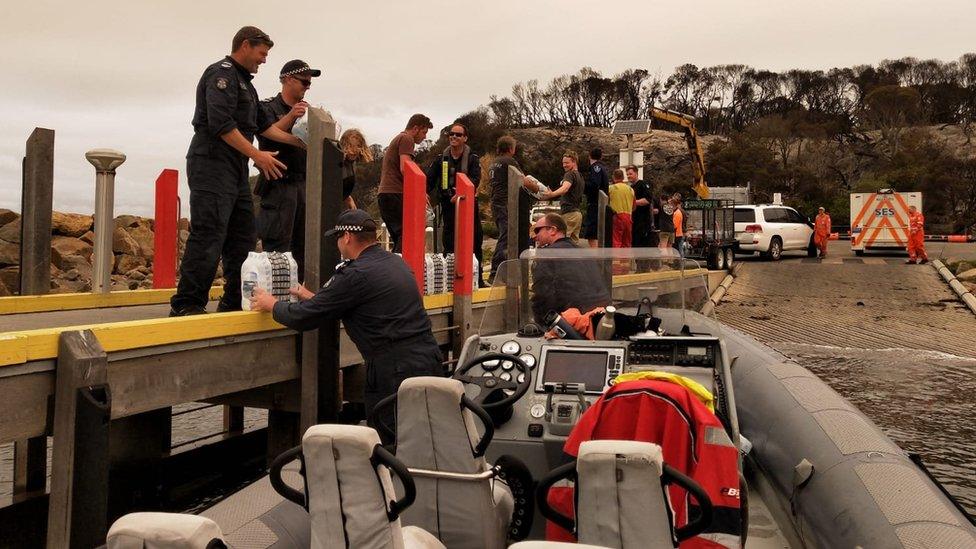
Police brought water, food and medical supplies into Mallacoota by boat
Fire services in Victoria and NSW warned they had been unable to reach some people in remote areas.
In the capital Canberra - an administrative region surrounded by NSW - bushfire smoke meant air quality there was rated worse than any major global city on Thursday, according to Swiss-based group AirVisual.
An elderly woman died after being exposed to the smoke as she exited a plane at Canberra airport, local reports say. Australia Post has suspended deliveries in the city "until further notice".

Are you affected by the fires? Let us know by emailing haveyoursay@bbc.co.uk, external

What does a state of emergency mean?
Under the NSW 1994 State Emergency and Rescue Management Act, the premier can issue a state of emergency when there is considered to be "a significant and widespread danger to life or property".
A state of emergency cuts the red tape, making it quicker and easier for emergency services to act
It puts the premier in direct command of all agencies and the allocation of resources and significantly increases the powers of the Rural Fire Service commissioner
Authorities can order people to evacuate from at-risk places or to "do all such things as are reasonably necessary" to make them leave, including through reasonable force
Emergency workers may be cleared to use force to get inside a property or take possession of it if needed
Authorities can open and close roads as needed, shut down utilities and pull down infrastructure
Financial assistance can be made available to volunteers

What is happening elsewhere?
Two regions of Western Australia (WA) were also facing catastrophic fire danger on Thursday, and parts of South Australia were expected to see extreme conditions on Friday.
The ABC reported that bushfires had forced the closure of a 330km stretch of a highway in WA, causing traffic jams.
Emergency supplies including water and toilet paper were flown in to a remote guesthouse located about 1,000km (620 miles) east of Perth which has been cut off from the city by bushfires.
About 120 people were on the Caiguna Roadhouse site, where temperatures were forecast to reach 48 degrees.
In Tasmania a fire burning on the outskirts of the state capital Hobart was downgraded from emergency to watch and act status.
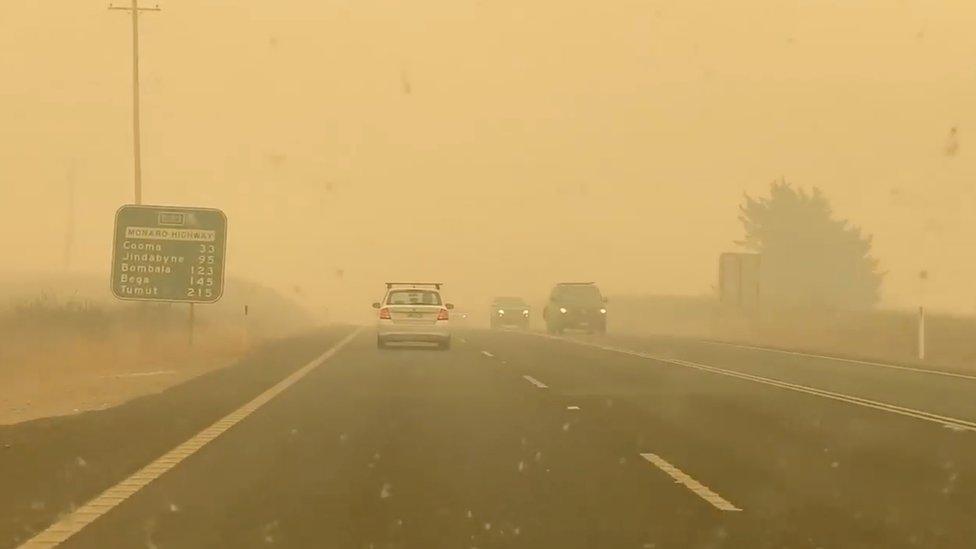
Bushfire smoke is blanketing Canberra
On Thursday, Prime Minister Scott Morrison repeated his calls to people not to panic and to trust emergency workers.
"I understand the fear that is there for many and the frustration, but this is a natural disaster, and natural disasters are best dealt with through the methodical, well-co-ordinated response that we are seeing today," he told a press conference.
Amid criticism that he had "gone missing" during the crisis, Mr Morrison added that cabinet would meet on Monday to consider a long-term bushfire response.
Meteorologists say a climate system in the Indian Ocean, known as the dipole, is the main driver behind the extreme heat in Australia.
However many parts of Australia have been in drought conditions, some for years, which has made it easier for the fires to spread and grow.
BBC Weather's Helen Willetts explains what's driving Australia's intense heat
- Attribution
- Published1 January 2020
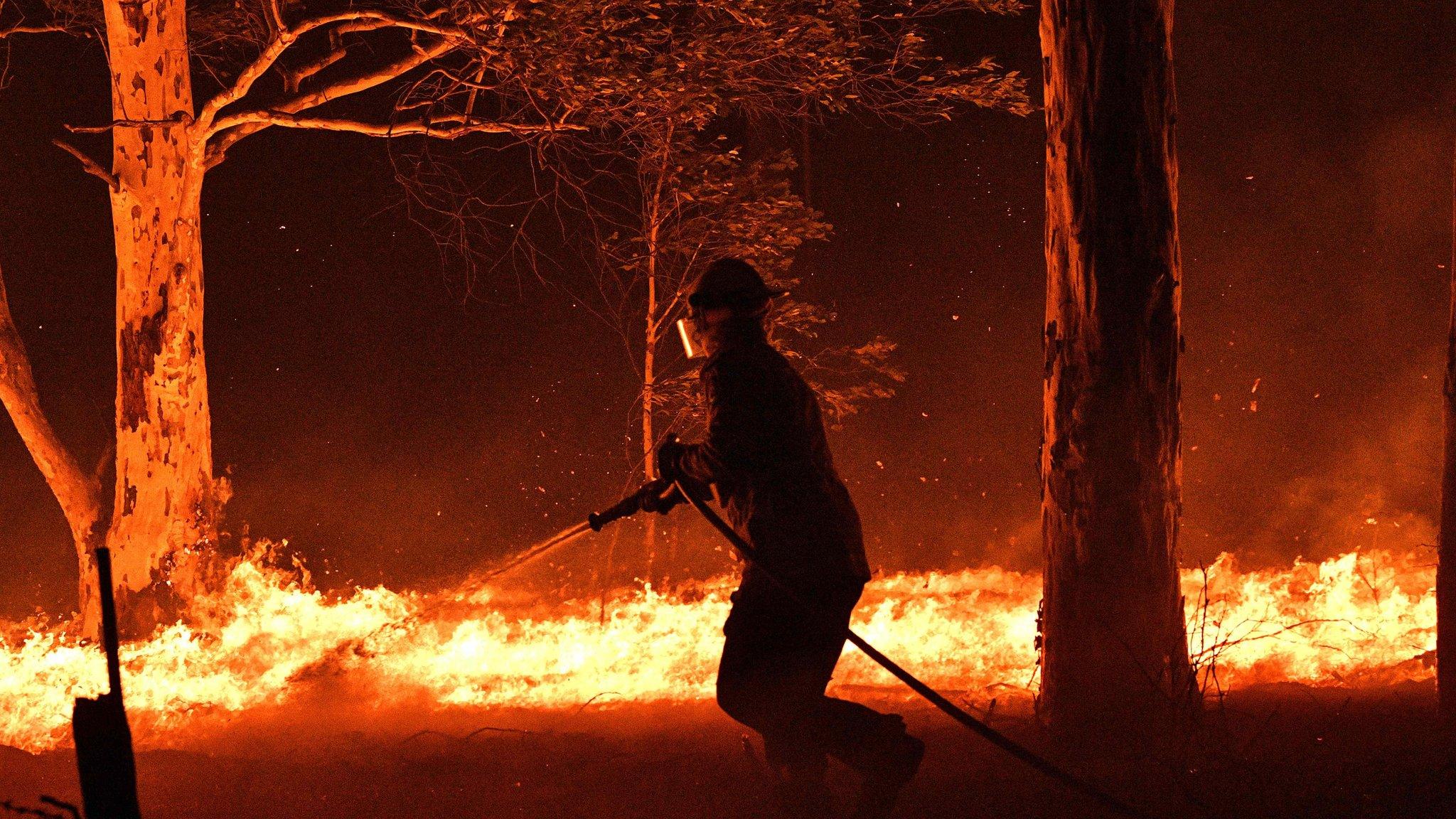
- Published31 December 2019
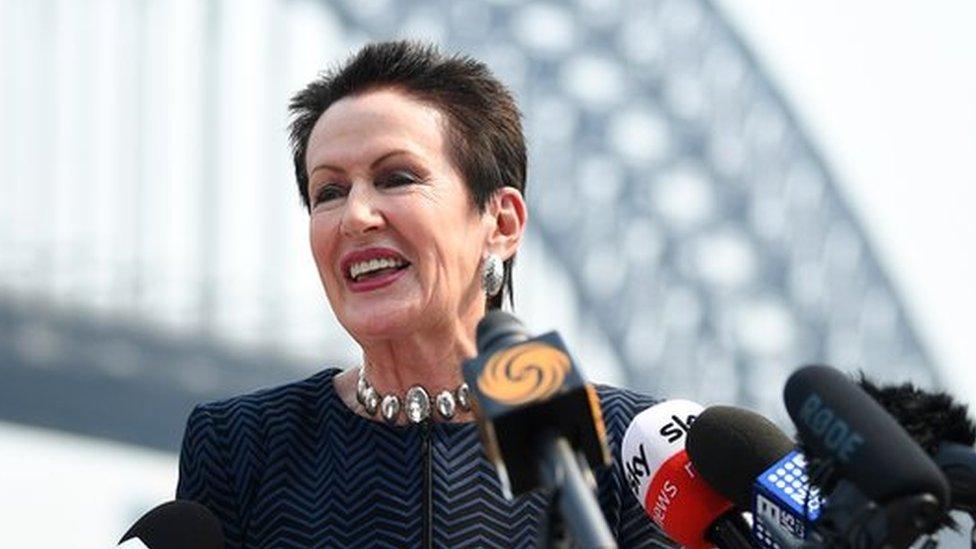
- Published31 December 2019
